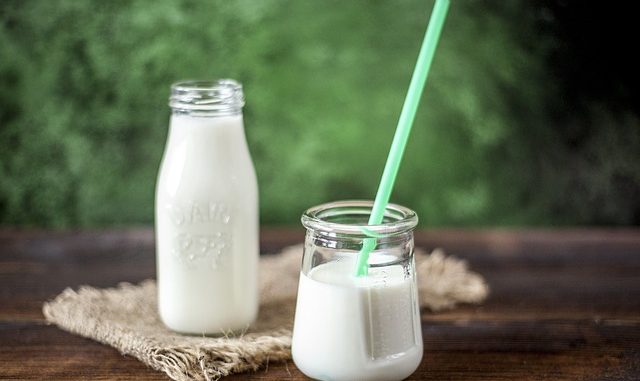
Microencapsulation of probiotics using hydrocolloids is now an established method for ensuring their survival and even for accurate dosing into products (Anal and Singh, 2007). The encapsulation process is a promising technique for protecting probiotics against adverse conditions to which these microorganisms can be exposed (Anal and Singh, 2007; Mokarram et al., 2009).
Several studies have been carried out investigating the protective role of this technique. Microencapsulation can be employed via extrusion and emulsion techniques. The emulsion technique is a method for encapsulation of probiotic bacteria in capsules smaller than 1 mm.
The daily intake of probiotic bacteria should exceed 106 living bacteria per milliliter or per gram of the product (Aragon-Alegro et al., 2007). Encapsulation should allow for accurate dosing of thee particular levels.
Alginate Is Ideal For Microencapsulation Of Probiotics
Alginate is possible the most popular microencapsulation material as it is cheap and a water-soluble anionic biopolymer. It is a natural heteropolysaccharide composed of D-mannuronic and L-guluronic acid residues joined linearly by (1-4) glycosides linkages (Mokarram et al., 2009). It is sourced from marine algae especially seaweeds. A number of jellies using alginate have been prepared, stabilised by calcium until they dissolve in the gut. This is an effective way of releasing the encapsulated contents into the intestine and in some cases can be designed to be released in the upper intestine.
Ding and Shah (2008) assessed the pH changes occurring in orange and apple juices containing eight strains of probiotics in free and encapsulated forms. They found that irrespective of the bacterial strain, samples containing protected probiotics with sodium alginate have a more stable environment during storage.
To improve the stability of alginate microcapsules and to decrease the loss of encapsulated material such as a probiotic, the alginate microcapsules are coated with polycationic polymers such as chitosan and poly-L-lysine (Lee et al., 2004; Koo et al., 2001). A membrane is created as a result of strong bonding between the carboxylic groups on the alginate molecule and amine groups from the chitosan part (Lee et al., 2004).
A combination of calcium alginates with the addition of prebiotics such as inulin or fructooligosaccharides improves the viability of the probiotic and also helps in the formation of the integrated structures of capsules (Narra et al., 2012). Mokkaram (2009) found that L. acidophilus and L. rhamnosus exposed to simulated gastric juice without pepsin had a higher viability when encapsulated in calcium alginate with a double coating of sodium alginate. Zanjani et al., (2017) microencapsulated Lactobacillus casei ATCC 39392 and Bifidobacterium adolescentis ATCC 15703 in calcium alginate beads with wheat, rice and high-amylose corn (Hylon VII) starches along with chitosan and poly L-lysine coatings. They examined the survival of the probiotics in ice-cream for 100 days at −30 °C. Microencapsulation coupled with a coating of chitosan and poly L-lysine as mentioned earlier helped the probiotics to survive.
The optimum alginate concentration was established for Lactobacillus casei Shirota which is the Yakult microorganism using a Technique for Order Preference by Similarity to Ideal Solution (TOPSIS) approach. The beads obtained with extrusion better protected the probiotic cells than the beads prepared by emulsification. The optimum alginate level was between 2 and 2.5% (Gul and Dervisoglu, 2017).
Lactobacillus rhamnosus GG (LGG) was embedded in a cross-linked soy protein isolate (SPI) using transglutaminase (TGase) (Li et al., 2016). This microencapsulated preparation was evaluated in a model gut intestine (pH 2.5 or 3.6), intestinal juice (0.3 or 2% bile salts) and a yogurt. In both cases the microencapsulated bacteria survived well enough to be considered a viable alternative to the use of alginate or other polysaccharide gelation methods.
References
Anal, A.K., Singh, H. (2007) Recent advances in microencapsulation of probiotics for industrial applications and targeted delivery. Trends Food Sci. Technol. 18 pp. 240–251.
Aragon-Alegro, L.C., Alarcon Alegro, J.H., Roberta Cardarelli, H., Chih Chiu, M., Isay Saad, S.M. (2007) Potentially probiotic and synbiotic chocolate mousse. LWT- Food Sci. Technol. 40 pp. 669–675
Ding, W. and Shah, N.P. (2008) Survival of free and microencapsulated probiotic bacteria in orange and apple juices. Int. Food Res. J. 15, pp. 219–232.
Donthidi, A., Tester, R.F. and Aidoo, K.E. (2010) Effect of lecithin and starch on alginate-encapsulated probiotic bacteria. J. Microencapsul. 27, pp. 67–77
Gul O, Dervisoglu M. Application of multicriteria decision technique to determine optimum sodium alginate concentration for microencapsulation of Lactobacillus casei Shirota by extrusion and emulsification. J. Food Process Eng. 40:e12481. Article
Koo, S., Cho, Y., Huh, C., Baek, Y., Park, J. (2001) Improvement of the stability of Lactobacillus casei YIT 9018 by microencapsulation using alginate and chitosan. J. Microbiol. Biotechn. 11 pp. 376–383
Krasaekoopt, W., Bhandari, B., Deeth, H.C. (2006) Survival of probiotics encapsulated in chitosan-coated alginate beads in yoghurt from UHT- and conventionally treated milk during storage. LWT- Food Sci. Technol. 39 pp. 177–183.
Lee, J.S., Cha, D.S., Park, H.J. (2004) Survival of Freeze-Dried Lactobacillus bulgaricus KFRI 673 in Chitosan-Coated Calcium Alginate Microparticles. J. Agr. Food Chem. 52 pp. 7300–7305
Li, C., Wang, C.-L., Sun, Y., Li, A.-L., Liu, F. and Meng, X.-C. (2016), Microencapsulation of Lactobacillus rhamnosus GG by Transglutaminase Cross-Linked Soy Protein Isolate to Improve Survival in Simulated Gastrointestinal Conditions and Yoghurt. Journal of Food Science, 81: M1726–M1734. Article
Mokarram, R.R., Mortazavi, S.A., Najafi, M.B.H., Shahidi, F. (2009) The influence of multi stage alginate coating on survivability of potential probiotic bacteria in simulated gastric and intestinal juice. Food Res. Int. 42 pp. 1040–1045
Narra, K., Dhanalekshmi, U., Rangaraj, G., Raja, D., Senthil Kumar, C., Neelakanta Reddy, P., Baran Mandal, A. (2012) Effect of formulation variables on rifampicin loaded alginate beads. Iran J. Pharm. Res. Summer; 11(3) pp. 715-21
Zanjani, M.A.K., Ehsani, M.R., Ghiassi Tarzi, B., Sharifan, A. (2017) Promoting Lactobacillus casei and Bifidobacterium adolescentis survival by microencapsulation with different starches and chitosan and poly L-lysine coatings in ice cream. J. Food Process Preserv. 00:e13318. Article
Leave a Reply